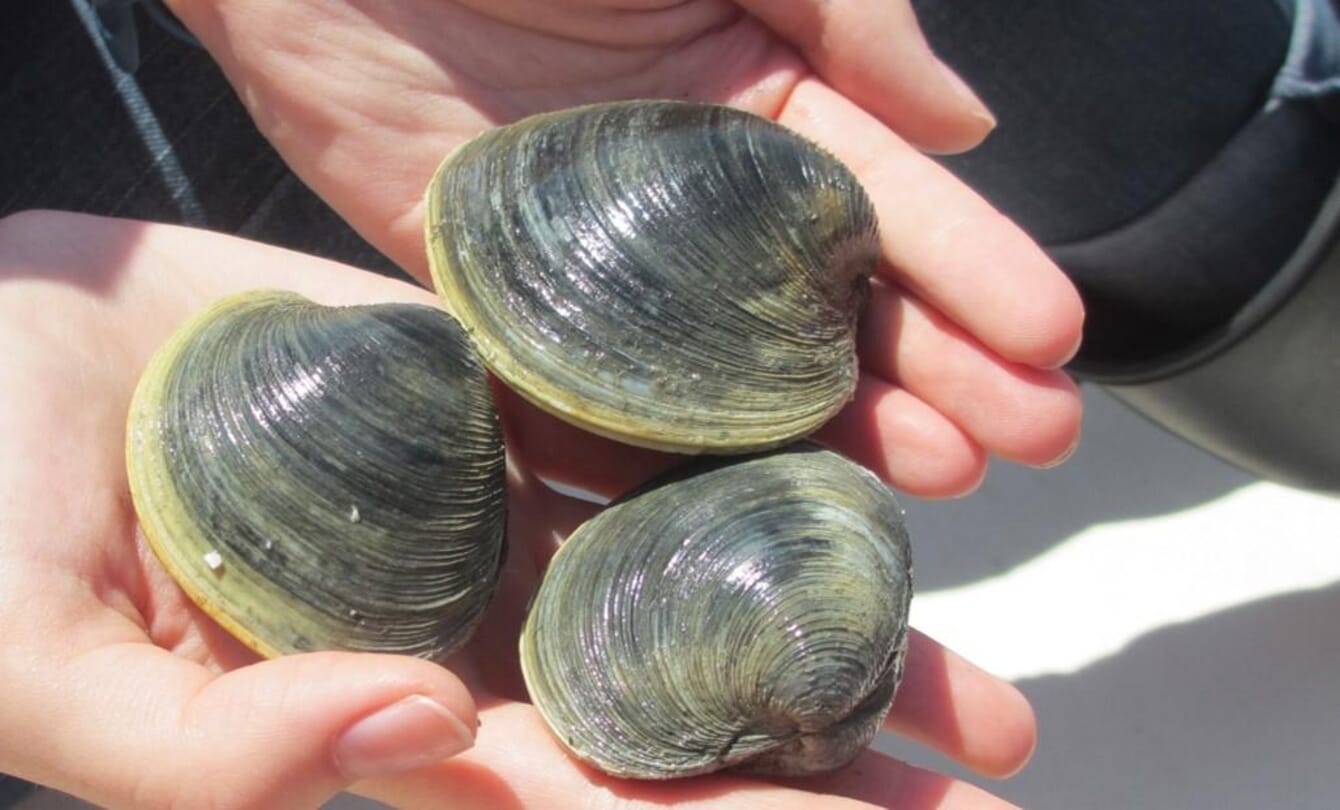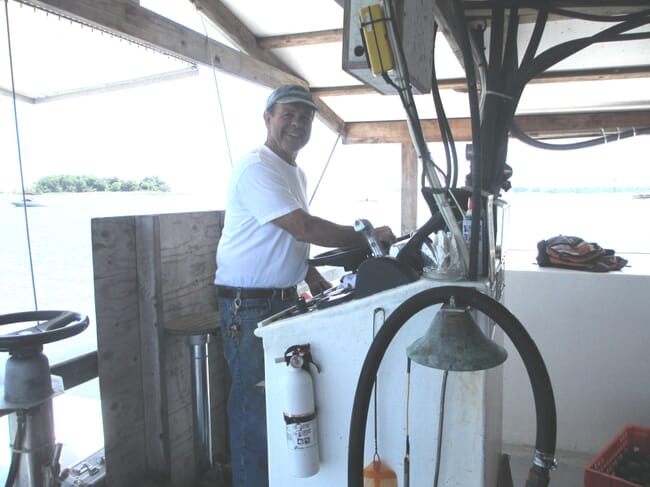
© NOAA
Researchers used a “transferable replacement cost methodology” to estimate the ecological and economic value of nitrogen reduction that results from oyster and clam aquaculture in Greenwich, Connecticut. The replacement cost method puts a dollar value on ecosystem services by estimating what it would cost for humans to provide those services. In this case, that was the cost of improving wastewater treatment, upgrading septic systems, and better managing stormwater.
The study was conducted by shellfish biologists, economists, and modellers from NOAA Fisheries, NOAA National Centers for Coastal Ocean Science, and Stony Brook University. It was recently published in Environmental Science & Technology.
“When we started discussing this work, I had a long list of ecosystem services in mind—not just nitrogen remediation, but water clarity for swimming and seagrass colonisation, habitat for recreational fish—all leading to improved quality of life in a coastal town,” said Gary Wikfors, chief of the Aquaculture Sustainability Branch at NOAA’s Northeast Fisheries Science Center’s Milford Laboratory in Milford, Connecticut, and a co-author of the study.
“As a biologist, I learned from this study how complex a comprehensive economic valuation is! The economic benefit estimates in this report are just a small fraction of the total—the tip of the iceberg—but still appreciable at the municipal level,” he said.
Aquaculture industry participation
Greenwich is a community with a thriving shellfish aquaculture industry located on a populous coastline. It serves as an ideal case study for the nutrient-capture benefits of shellfish. About 60 percent of the seafloor off Greenwich is used for shellfish activities, including aquaculture, recreational areas, and seed beds. Particularly in communities with diverse and diffuse nitrogen sources like Greenwich, growing shellfish for food can make a big difference to nutrient management.
Partnerships with two local shellfish growers, Atlantic Clam Farms and Stella Mar Oyster Company, were crucial to this study. The companies provided data on their annual shellfish harvest and local aquaculture practices, which researchers used to model the amount of nitrogen removed.
The owner of Atlantic Clam Farms, Ed Stilwagen, also goes by the moniker “Captain Clam.” He has been growing shellfish in Greenwich waters for more than 20 years and shellfishing since the 1940s. He invented a system for more environmentally-friendly harvesting, and frequently cleans up marine debris while tending to his leases.
“Shellfish are a wonderful food source, and we have perfect conditions to grow them here,” said Stilwagen. “They don’t call me Captain Clam for nothing. I get a lot of interest when I tell people I’m a shellfish farmer—people want to know how many there are and how many I harvest. I hardly ever meet people who don’t like clams, but even if they don’t, they can appreciate that they take care of the environment by filtering the water. Having shellfish in the water improves water quality.”
Oysters and clams as nutrient management
Nitrogen enters coastal waters from many different sources, including agriculture, fertiliser, septic systems and treated wastewater. In excess it fuels algal growth, which can affect water quality and human health. As a result, a growing number of communities are required to follow regulations to release less nitrogen. Shellfish can be a valuable part of a community’s nutrient management plan when preventing nitrogen release is not enough.
Growing bivalve shellfish, including oysters and clams, provides direct economic benefits to a community by supporting jobs and making fresh local seafood available to consumers. It also provides ecosystem services—benefits that nature provides to people—including habitat for native species and improved water quality.

© NOAA
An adult oyster can filter up to 50 gallons of water per day, while large adult clams can filter up to about 40 gallons daily. Both take up nutrients when they filter feed on algae. Some of those nutrients become part of their shells and tissue, and are taken out of the watershed when shellfish are harvested. Nutrient removal is beneficial to the watershed. It reduces the risk of excessive algal growth that can starve fish and other organisms of oxygen, resulting in fish kills and other negative outcomes.
Estimating the value of those water quality benefits required a multidisciplinary approach; one that got biologists thinking about economics and economists thinking in ecological terms.
Economic value of water quality improvements
More than half of the local nitrogen input in Greenwich is nonpoint source, such as runoff from lawn fertiliser. The rest is point source input, such as treated wastewater. Nonpoint source input is often more challenging and expensive to reduce than point source input, requiring a multifaceted strategy.
The researchers found that replacing the nutrient removal benefits of shellfish aquaculture in Greenwich with traditional, engineered nutrient reduction strategies would cost between $2.8-5.8 million per year. The estimate assumes nitrogen removal by shellfish would be replaced with a combination of wastewater treatment improvements, septic system upgrades and stormwater best management practices in proportion to the local nitrogen sources.
Clam and oyster aquaculture removes approximately 9 percent of the locally-deposited nitrogen from Greenwich’s coastal waters annually. That’s about 31,000 pounds of nitrogen per year. The percentage removed is even greater when considering only nitrogen from nonpoint sources (16 percent), fertiliser (28 percent), or septic sources (51 percent). Per-acre nitrogen removal for oyster aquaculture was higher because oysters are grown more densely, but clams contributed more to nutrient reduction because more clams are harvested overall.
Shellfish are unique because they take up nitrogen across all sources, whether from lawn fertiliser, deposition from the atmosphere, or treated wastewater. Residents of the community benefit from shellfish aquaculture whether or not they eat oysters, as they enjoy improved water quality.
“Shellfish provide water quality benefits that coastal residents and visitors may not fully appreciate on a day-to-day basis. Our findings show that shellfish populations grown for harvest may complement land-based nutrient management approaches as part of the portfolio of solutions for excess nitrogen in our coastal waters,” said Anthony Dvarskas, who co-led the study while an assistant professor at Stony Brook University.
The team developed two ways to estimate the value of shellfish nitrogen remediation. One is appropriate for a well-established shellfish aquaculture industry and estimates nitrogen removal from the annual harvest. The second allows ecosystem managers to project the nitrogen removal of a new or growing industry.
“We developed a method to estimate potential harvest in communities with limited or no current aquaculture, but with opportunities to expand or start aquaculture, to highlight possibilities,” said project co-lead Suzanne Bricker from NOAA’s National Centers for Coastal Ocean Science. Bricker used computer models to calculate the amount of nitrogen removed.
The approach detailed in this study can be applied to other communities wishing to reduce nutrients to improve water quality. Even without a local shellfish aquaculture industry, decision makers will find the study useful in understanding the environmental benefits of shellfish to their coastal waters.
"There is growing interest in shellfish aquaculture in coastal communities around the United States, and our hope is that the approach we developed here can help inform local discussions about aquaculture around the country,” said project co-lead Julie Rose from the Milford Laboratory.
Rose added, “The next phase of our project will be estimating the value of all of the clams and oysters taking up nitrogen from Greenwich waters, rather than just the harvested portion.”



